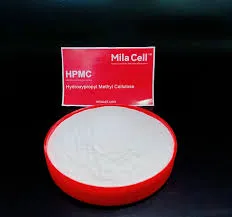
Dec . 12, 2024 10:54 Back to list
hec cellulose
The Versatility and Applications of HEC Cellulose
Hydroxyethyl cellulose (HEC) is a highly versatile, water-soluble polymer derived from cellulose, a natural polymer found in the cell walls of plants. HEC is synthesized by the etherification of cellulose with ethylene oxide, resulting in a compound that combines the intrinsic properties of cellulose with unique characteristics that make it valuable across a variety of industries. This article explores the properties, applications, and benefits of HEC cellulose, illustrating its significant role in modern technology and daily life.
Properties of HEC Cellulose
HEC is recognized for its excellent solubility in water at room temperature, forming a clear, viscous gel-like solution. One of its most notable properties is its ability to create thick, stable emulsions, which is crucial in various formulations. HEC is also characterized by its non-ionic nature, which means it does not ionize in solution, making it compatible with other ingredients without the risk of destabilizing interactions. Moreover, the viscosity and behavior of HEC can be manipulated by controlling the degree of substitution during its synthesis, allowing for precise formulations tailored for specific applications.
Another important property of HEC is its thermal and pH stability, which enhances its performance across a wide range of conditions. This stability, combined with its non-toxic and biodegradable nature, makes HEC an attractive choice in products intended for personal care, pharmaceuticals, and food industries.
Applications of HEC Cellulose
1. Cosmetics and Personal Care Products HEC is widely employed in the cosmetics industry due to its ability to enhance texture and stability in creams, lotions, and other personal care products. It acts as an emulsifier, thickening agent, and film-former, contributing to the smooth application and overall sensory experience of products. Moreover, its moisture-retaining properties make it beneficial for skin hydration, ensuring that cosmetic formulations are effective and appealing.
2. Pharmaceuticals In the pharmaceutical sector, HEC serves as a binder, thickener, and stabilizer in various dosage forms, including tablets and suspensions. Its biocompatibility and solubility facilitate the development of controlled-release formulations, allowing for more consistent drug delivery. Additionally, HEC is used in gels and ointments, providing a desirable consistency that enhances patient comfort.
hec cellulose

3. Food Industry HEC is utilized as a thickening agent and stabilizer in the food industry. It helps maintain emulsion stability, improves texture, and enhances the mouthfeel of food products. As a non-toxic additive, HEC is ideal for various applications, including sauces, dressings, and dairy products, ensuring safety and quality in food formulations.
4. Construction Materials In the construction industry, HEC is incorporated into cement and plaster formulations, where it enhances workability, improves water retention, and inhibits the segregation of ingredients. Its ability to create a smooth texture contributes to the overall quality of construction materials, ensuring durability and ease of application.
5. Textile and Coatings HEC is used in textile processing and as a component in various coatings. In textiles, it acts as a sizing agent, improving the handling properties of yarns and fabrics. In coatings, HEC provides viscosity control and film-forming characteristics, making it suitable for both water-based and solvent-based applications.
Benefits of HEC Cellulose
The adoption of HEC cellulose in diverse applications offers several advantages. Its biodegradable nature aligns with the growing demand for environmentally friendly products, as consumers increasingly seek sustainable alternatives. HEC enhances product performance while minimizing environmental impact, which is especially relevant in today’s eco-conscious market.
Furthermore, the versatility of HEC allows manufacturers to customize products based on specific needs, meeting the demands of various industries. Its compatibility with a wide range of other ingredients ensures that it can be seamlessly integrated into existing formulations.
In conclusion, hydroxyethyl cellulose is a remarkable polymer with diverse applications across multiple sectors. Its unique properties and benefits make it an essential ingredient in cosmetics, pharmaceuticals, food products, construction materials, and textiles. As industries continue to evolve, the importance of HEC cellulose is likely to grow, further solidifying its role as a critical component in enhancing product performance and sustainability.
-
Versatile Hpmc Uses in Different Industries
NewsJun.19,2025
-
Redispersible Powder's Role in Enhancing Durability of Construction Products
NewsJun.19,2025
-
Hydroxyethyl Cellulose Applications Driving Green Industrial Processes
NewsJun.19,2025
-
Exploring Different Redispersible Polymer Powder
NewsJun.19,2025
-
Choosing the Right Mortar Bonding Agent
NewsJun.19,2025
-
Applications and Significance of China Hpmc in Modern Industries
NewsJun.19,2025







